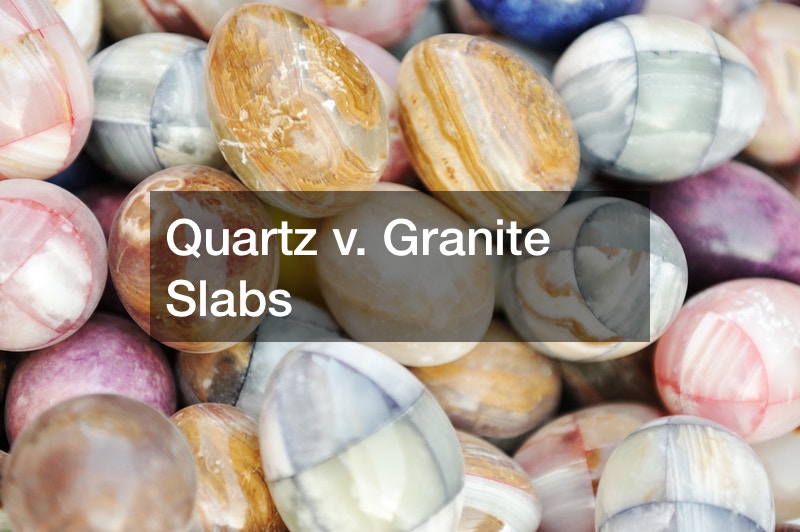
Quartz and granite slabs are popular options for kitchen and bathroom countertops. They’re both sturdy materials that come in a variety of colors and patterns. There are a few key differences, though. This video explains some of the differences between granite and quartz.
The first difference is where the stone originates. Quartz is a mineral that’s very similar to sand. To create a quartz slab, the granules are mixed together with resins and polymers, and compressed into a solid slab. For this reason, quartz is referred to as an engineered stone.

Granite, on the other hand, is a naturally occurring stone that originates in the earth’s crust. It forms as magma and lava cool and solidify. The patterns and intricacies on each granite slab are unique to that slab.
The other difference is porosity. Granite and all other natural stones are more porous than quartz. Granite countertops need to be stained periodically to make them waterproof and protect them from staining. Quartz is waterproof by design and doesn’t require sealants.
Granite requires more maintenance on the whole than quartz. However, the two can match price-wise. The choice you make depends on the lifestyle you lead. For more information, check out the video above.



